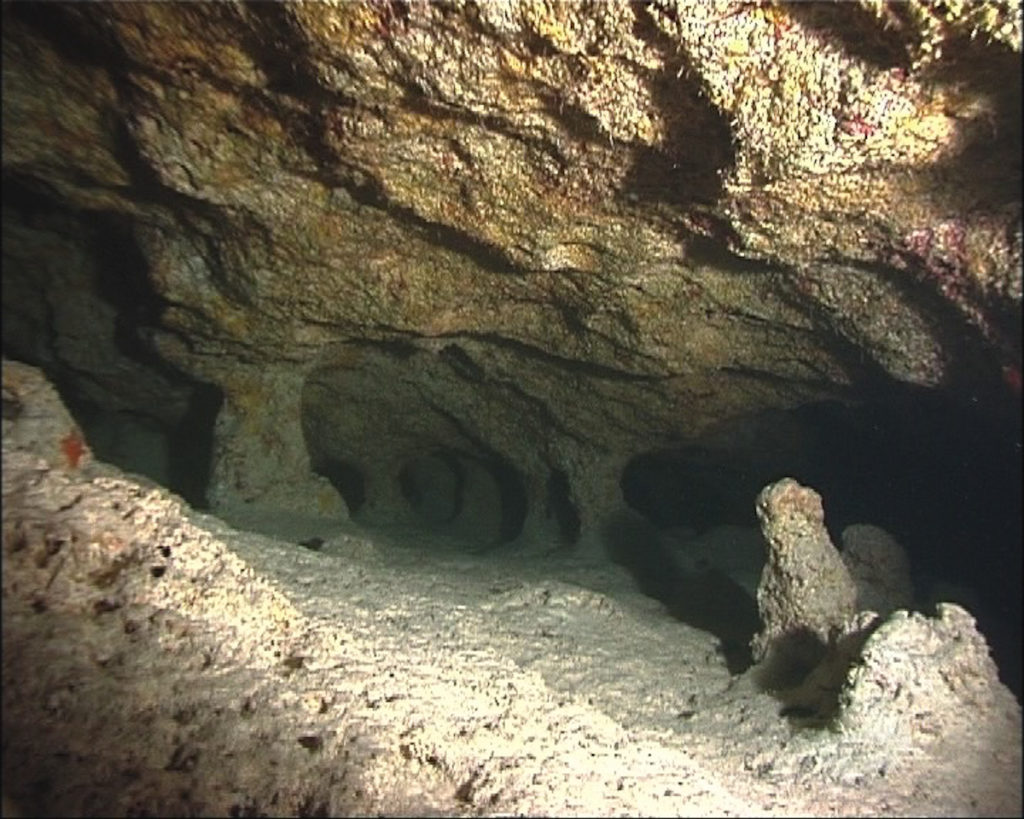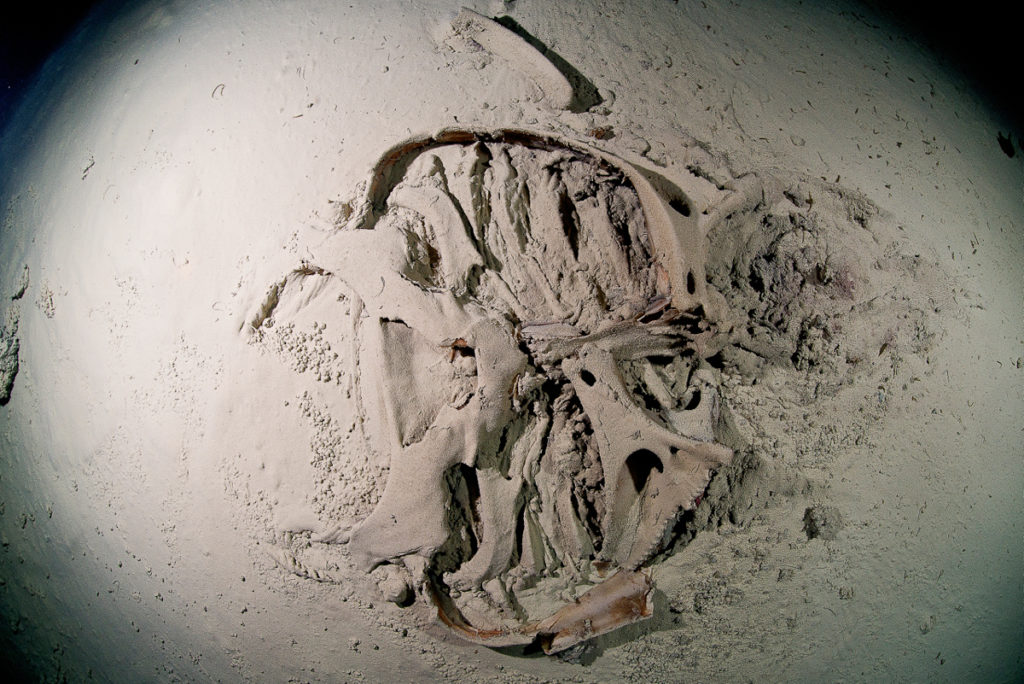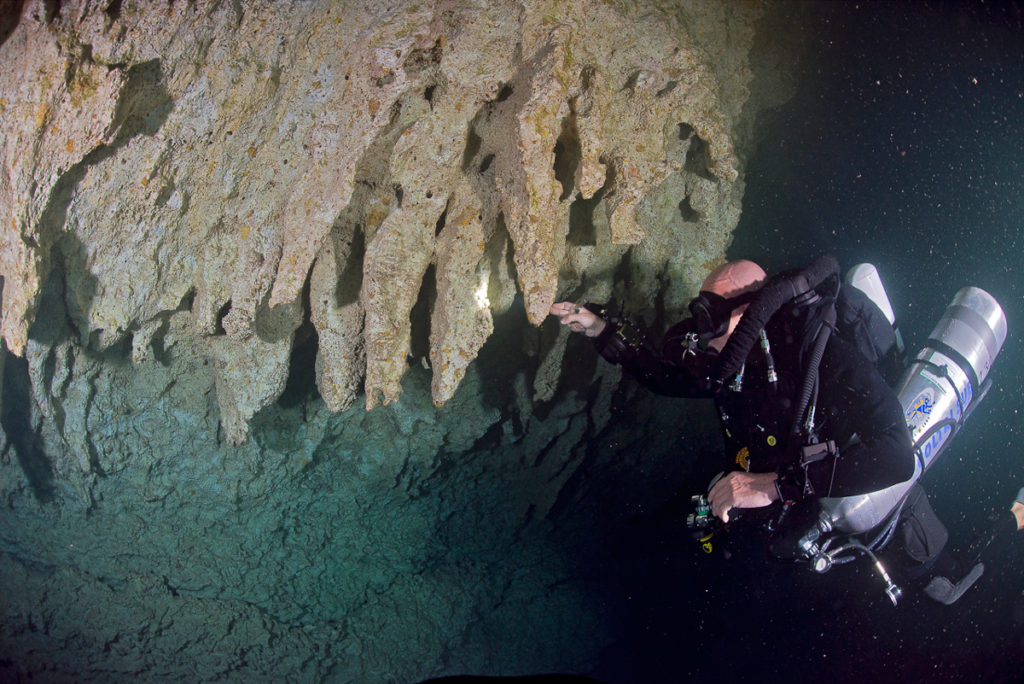As today the Blue Hole in the Maldives is the only one known in the whole Indian Ocean. It was discovered purely by chance many years ago. It then became destination of scientific expeditions led by Luxury Yacht Maldives, proving itself utterly interesting geologically speaking. Many scientific publications followed, and some chronicles on diving magazines, but it was soon forgotten, given its lame tourist interest.
It opens up at the bottom of 30 meters depth, exactly the maximum limit allowed by Maldivian laws for recreational scuba diving. So much so that in order to explore it special permissions had to be issued. Nowadays it seems things might be evolving, and there are high expectations on opening to tek diving, e.g. CCRs, ideal machines to dive the blue hole, maintaining the integrity of certain delicate formations along the walls, damaged by the bubbles emitted by standard regulators. In the next two articles we’ll explain all about that.
PART ONE: First Dive Report
by Massimo Sandrini
When I first found the Blue Hole, thanks to the anchor stuck on the bottom, I found myself facing a very common “giri”. The “giri” in dhivehi (Maldivian language) is a tiny pinnacle setting up to the surface within lagoons. And it’s this very small giri the perfect starting point to dive the Blue Hole: first of all because it is the only coral tower coming up to 13 meters from the monotonous sandy bed surrounding it, secondly because getting down from the giri north side you directly fall at the mouth of the Blue Hole, at 30 meters depth.
Water from 0 to 30 mts is generally muddy, let’s not forget we’re in a lagoon environment; for the same reason current is practically non existing, which feels strange for those used to regular diving in the Maldives where, as strong or weak as it may, current is always there.

Once at 30 mts it is visibile the entrance of the blue hole, it does look like the sandy bottom is swallowed by a darkest chasm.The adventure begins, one realizes he’s entering a very peculiar world. It is crucial to stick to the wall to keep a reference and light up with the torches. It is also mandatory to pay utter attention to the kicks, as the small terraces on the walls are covered by a very thin layer of slimey ground, very easy to lift.
Down to 40-45 meters walls develop basically in vertical alone and it is sufficient to fix one’s trim to get down without getting too far away from them. It is worth indulging for a closer look at the characteristics of the world ahead of us. All of a sudden a thick fog swallows us, reddish when the torches attempt to cut it through, and we must get closer to the wall. But where is it? It’s getting away from us, we’re just inside the blue hole now and walls start to fall straight overhanging. The shape of the blue hole is similar to the one of a huge bell with an absolute irregular profile, so that diving other side, especially the northern, the inclination is such that it becomes really challenging to follow the wall becoming almost like a ceiling impending on us.
This foggy layer is technically called chemocline (specific phenomenon of the border between oxygenated water and water rich in hydrogen sulfide) and it is immediately noticeable the piercing smell of rotten eggs, perfectly perceivable even from mask and regulator. Such smell stems from the high concentration of hydrogen sulfide, at touch water feels lightly greasy and -wow!- our leeds, reacting with it, virate to a very dark grey color.
There is no longer any trace of those tiny fish swimming around the mouth of the blue hole, life seems to be completely swept away, due to the hydrogen sulfide and the lack of oxygen dissolved in the water. The walls present corroded remains of stalactites and stalagmites, as much as greenish and reddish duricrusts of sulfur bacteria. A picture taken in certain points might look like the palette of a lunatic painter.

We’re now at 55 mts depth, in complete darkness, just like in a night dive. On the other hand, with due powerful torches, it is astonishing looking through the water, now suddenly back to crystal clear again. From the dome of the blue hole thousands of pinnacles hang down (see pic), like carnival festoons they decorating it. They look like small stalactites icey, motionless in the dark water: we’re strongly tempted to touch them, but it’s a huge no no, doing it would mean reduce them to dust, they’re bacterial structures extremely ephemeral and fragile.
At about – 65 mts from a small ledge something weird pops out: it looks like hundreds of whiteish pencils stuck in the “rock”. We’re facing what’s most likely left of the root system of a now fossilized palm tree; 65 meters of coral grew on it in the meantime, can you imagine how many years went by?
The wall starts straightening almost vertically, we get deeper and -75 we can see the bottom weakly reverberating the lights of our torches; it’s quite clear and heasteeply sloping towards the wall, so much that, pointing the lights inside the cavity, is clearly visible that the higher depth is near the walls instead of the center of the blue hole.
At -82 we hit the bottom, a very thin slimey ground lies there, after a quick look around it’s time to ascend again, a long decompression ahead of us. While ascending we notice we have harmed a whole strip of those columns, ripped by our whirlpooling bubbles, emitted from the regs and risen by the wall.
Those very bubbles that dragged along the thin ground of the walls until the mouth of the well, making the water column completely dark up to the surface.Deco has been long and boring, hanngin to a rope dropped with the spare tanks by our loyal crew onboard our dhoni, lazily swinging in the most calm waters of Faanu Madugau.
Massimo Sandrini Oceanographer geologist








1 Comment
Sounds amazing! Can you share the location/gps coordinates? I am in the Maldives at the moment with the boat I work on and would be great to explore this!